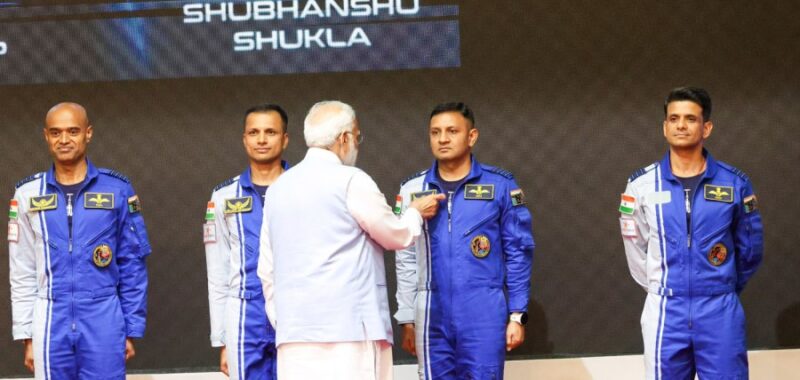
India has already accomplished great things in space.
It has orbited the moon three times and landed on the lunar surface once with its Chandrayaan missions. India has orbited Mars, with its Mangalyaan probe, launched two astronomy missions, the AstroSat and the X-Ray Polarimeter Satellite and a solar mission, the Aditya-1.
The Indian Space Research Organization is already planning its own crewed spacecraft, the Gaganyaan, which will start uncrewed orbital test flights shortly. The astronauts for the first crewed flight have already been announced.
Now, according to Space News, the Indian cabinet has authorized several additional space projects. These include the Chandrayaan-4 lunar sample return mission, the Venus Orbiter Mission, a reusable launch vehicle, and the first Bharatiya Antariksh Station space station module.
India’s ambition to become a major space power is breathtaking. The country wants to be on par with both the U.S. and China. By way of comparison, while Japan and the European Space Agency are space powers, neither have any serious ambitions to fly humans into space using their own vehicles.
Space exploration has usually been characterized by rivalry between superpowers. From the start of the Apollo program to the fall of the Soviet Union, the rivalry was between the U.S. and the USSR. In modern times, the space race has been between the United States and its allies and China.
We’re about to enter an era in which two of the three space superpowers, defined as countries that can launch people into space, are allies against the third one. The situation sets up an interesting dynamic that the United States and India both can use to their mutual advantage.
To be sure, Russia is still flying people into space. But it is a space power in decline, likely to become irreversible unless Moscow takes some drastic action. A good first step would be to stop the running sore in Ukraine and concentrate on economic and technological development.
Of the proposed projects that the Indian cabinet has authorized, the reusable launch vehicle will be the most challenging. NASA tried over decades to create a reusable launcher, first with the space shuttle, then with projects such as the Delta Clipper (which it inherited from the military) and the X-33 Venture Star.
It took an unlikely space entrepreneur, an immigrant from South Africa named Elon Musk, to crack the reusable rocket problem. Musk has taken his company SpaceX from an upstart enterprise to the dominant force in the space launch business with its Falcon 9 and Falcon Heavy rockets. Two books by space journalist Eric Berger, Liftoff and Reentry, tell the story of that rise to power.
Currently, SpaceX is working on Starship, a massive rocket that promises to open the moon, Mars and space beyond to human activity,
The question arises whether India wants to develop a reusable rocket in-house, as an Indian Space Research Organization program, or commercially. China is seeking its own reusable launch vehicle commercially with little success so far, as Ars Technica suggests.
One reason development of an Indian reusable rocket is a welcome event is that, as space analyst and founder of Astralytical Consulting points out, a huge bottleneck exists for launch payloads, even though SpaceX is likely to achieve 100 or more launches in 2024. SpaceX’s rivals, including United Launch Alliance, Blue Origin, and Rocket Lab, are nowhere near to achieving SpaceX’s launch cadence. An Indian reusable launcher could help relieve that bottleneck.
The U.S. can and should aid India’s rise as a space power by sharing data derived from NASA planetary missions in exchange for data from Indian missions, such as the Venus Orbital Mission and the Chandrayaan-4. NASA can also include more Indian astronauts on tours of the International Space Station and, later, future commercial stations. It could also include at least one Indian astronaut on an Artemis mission to the lunar surface.
Once the Gaganyaan spacecraft is operational, NASA should execute an agreement to have it take astronauts to and from the ISS, similar to the one NASA has for the Russian Soyuz.
An American-Indian space alliance would be similar to the one that NASA forged with Russia in the 1990s after the Soviet Union collapsed. The Russian alliance has chilled considerably, due to Vladimir Putin’s adventure in Ukraine. An alliance with India should be more enduring, not the least because the two countries have a mutual enemy in China.
Mark R. Whittington is the author of “Why is It So Hard to Go Back to the Moon?” as well as “The Moon, Mars and Beyond,” and, most recently, “Why is America Going Back to the Moon? He blogs at Curmudgeons Corner.

